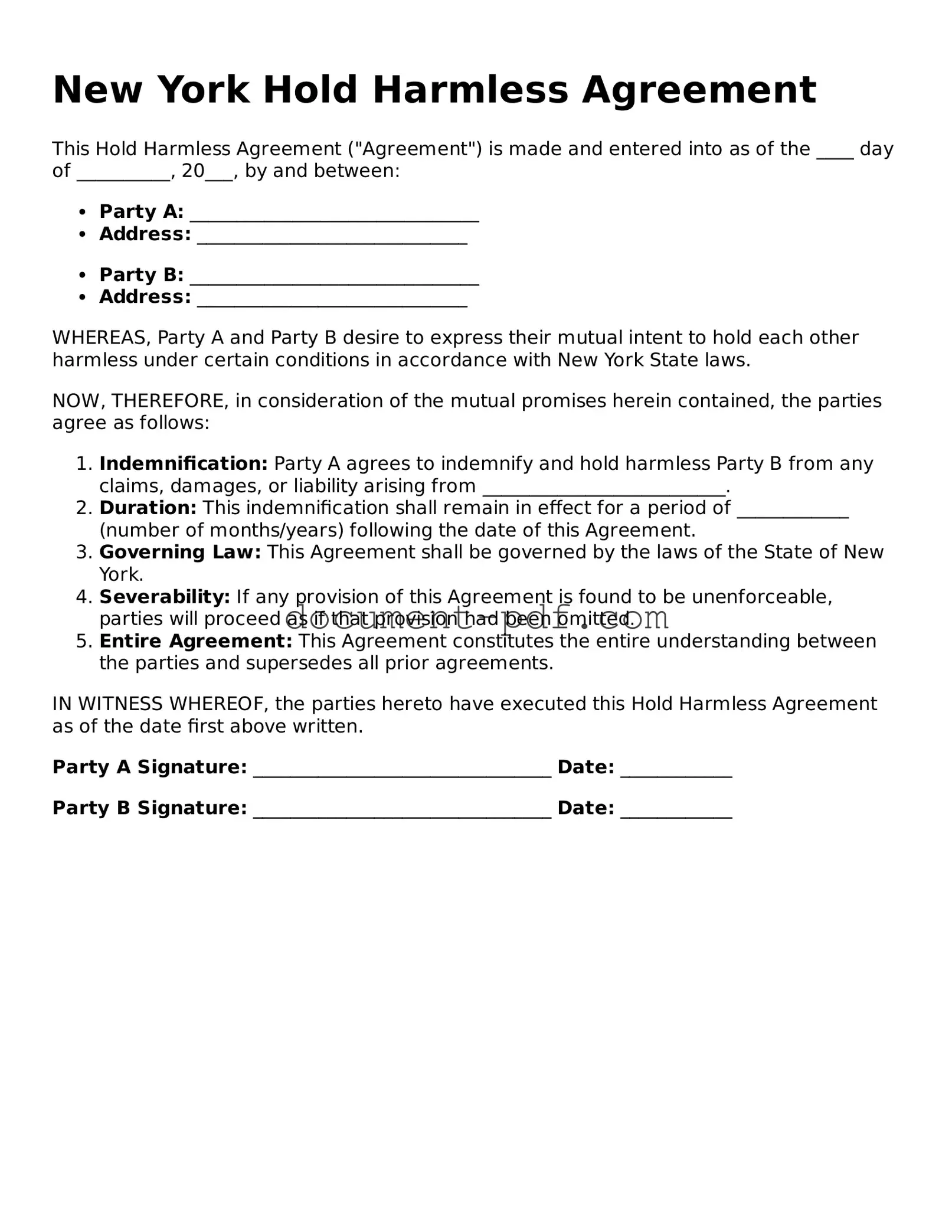New York Hold Harmless Agreement
This Hold Harmless Agreement ("Agreement") is made and entered into as of the ____ day of __________, 20___, by and between:
- Party A: _______________________________
- Address: _____________________________
- Party B: _______________________________
- Address: _____________________________
WHEREAS, Party A and Party B desire to express their mutual intent to hold each other harmless under certain conditions in accordance with New York State laws.
NOW, THEREFORE, in consideration of the mutual promises herein contained, the parties agree as follows:
- Indemnification: Party A agrees to indemnify and hold harmless Party B from any claims, damages, or liability arising from __________________________.
- Duration: This indemnification shall remain in effect for a period of ____________ (number of months/years) following the date of this Agreement.
- Governing Law: This Agreement shall be governed by the laws of the State of New York.
- Severability: If any provision of this Agreement is found to be unenforceable, parties will proceed as if that provision had been omitted.
- Entire Agreement: This Agreement constitutes the entire understanding between the parties and supersedes all prior agreements.
IN WITNESS WHEREOF, the parties hereto have executed this Hold Harmless Agreement as of the date first above written.
Party A Signature: ________________________________ Date: ____________
Party B Signature: ________________________________ Date: ____________
